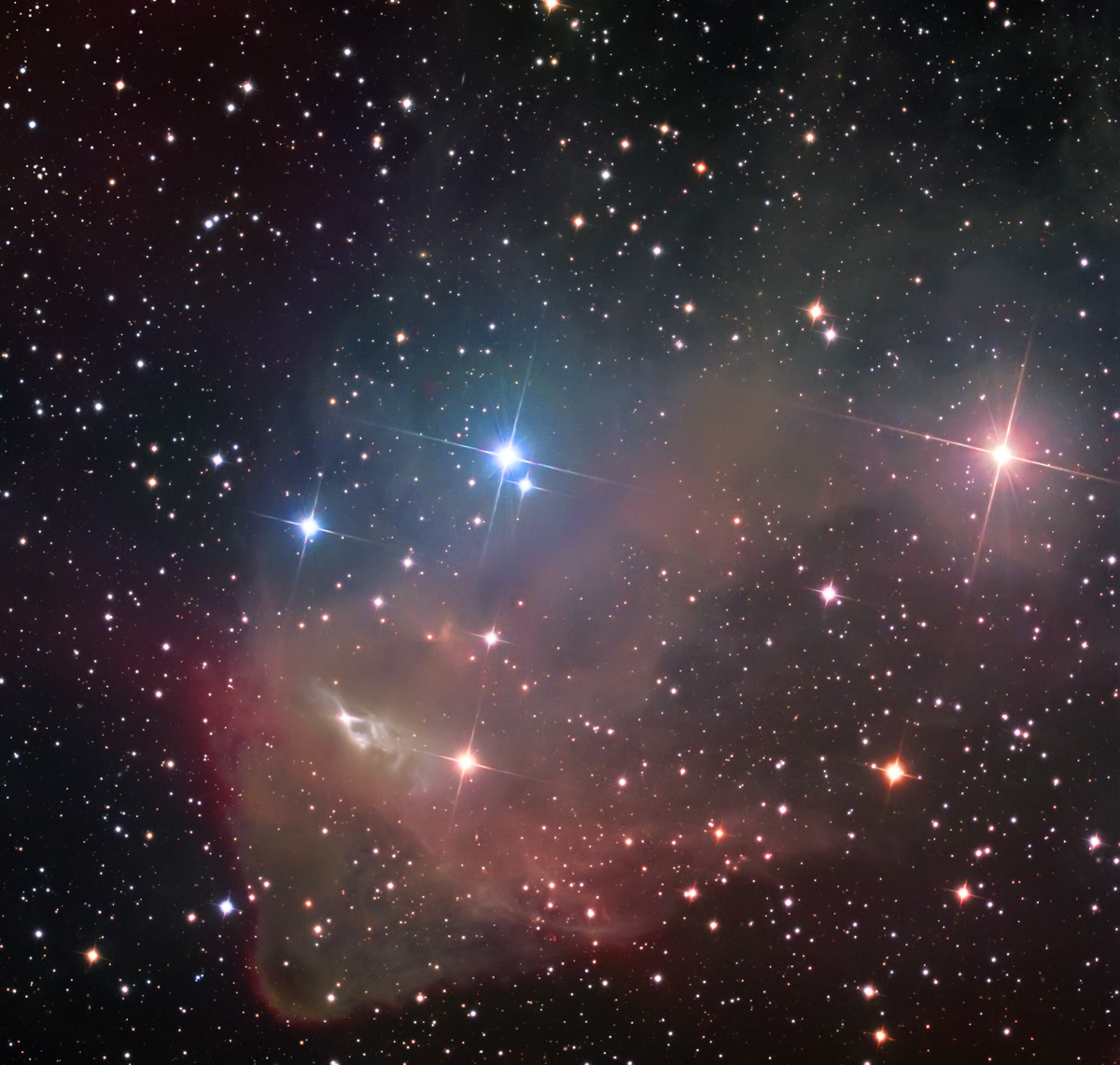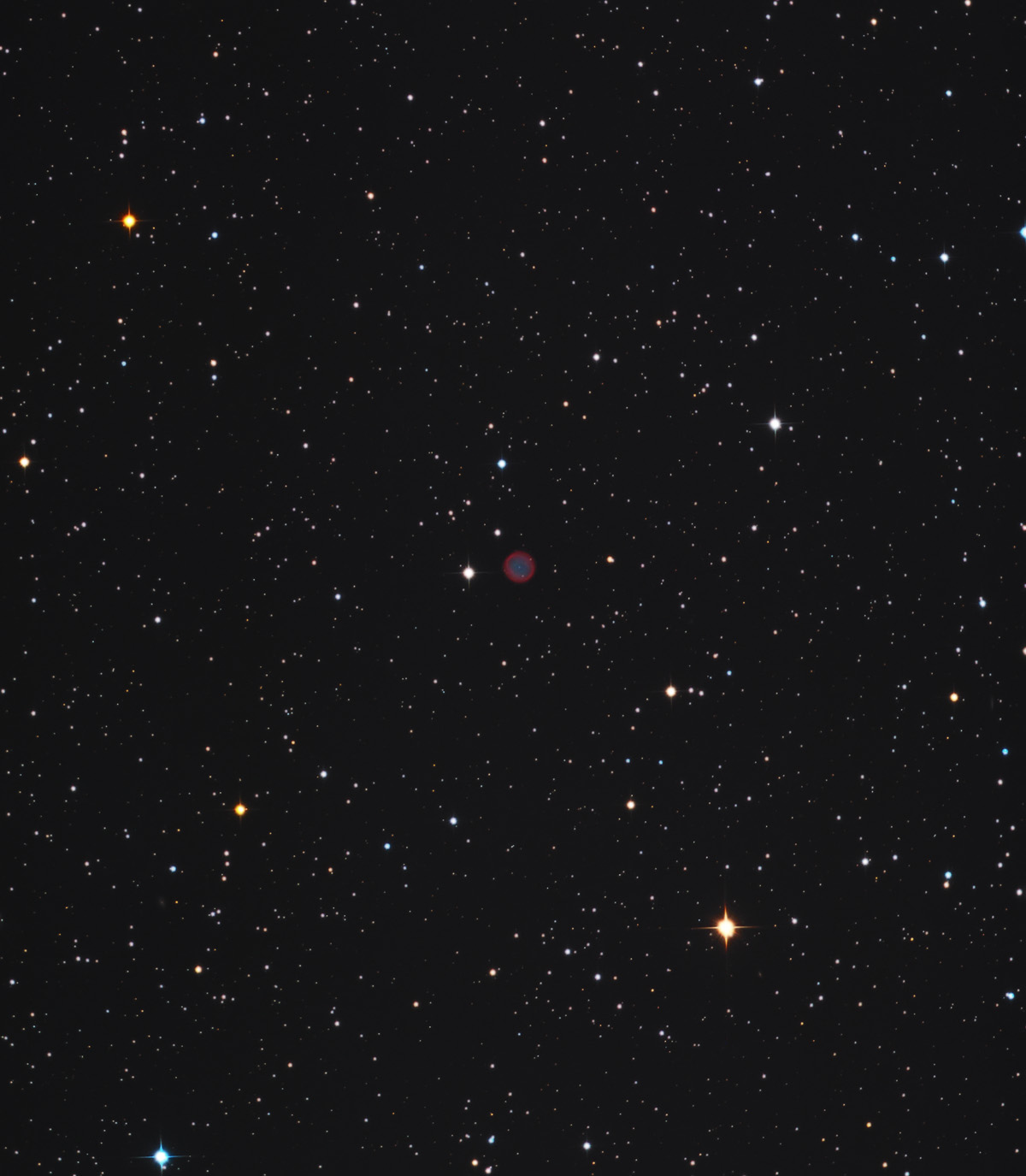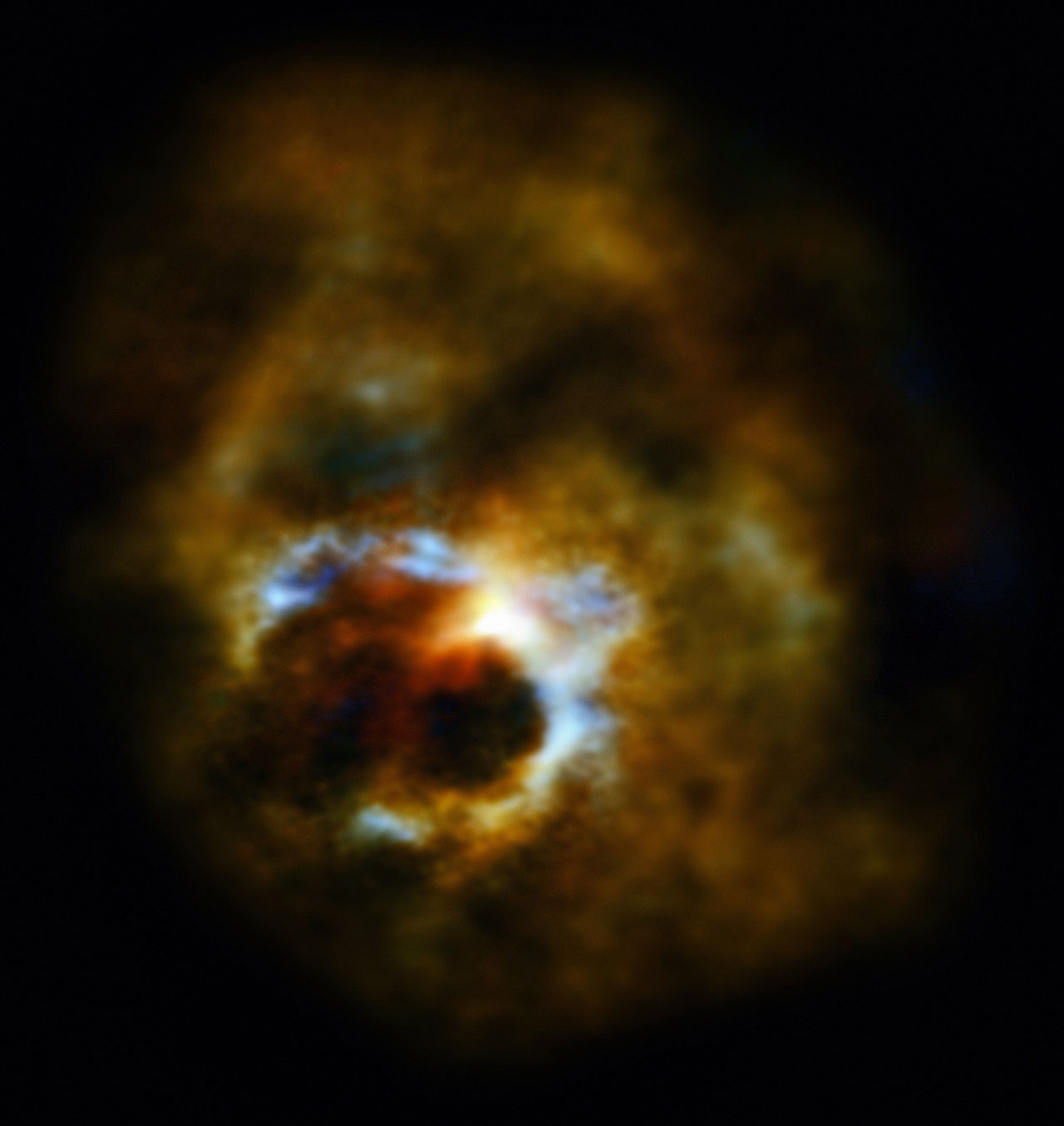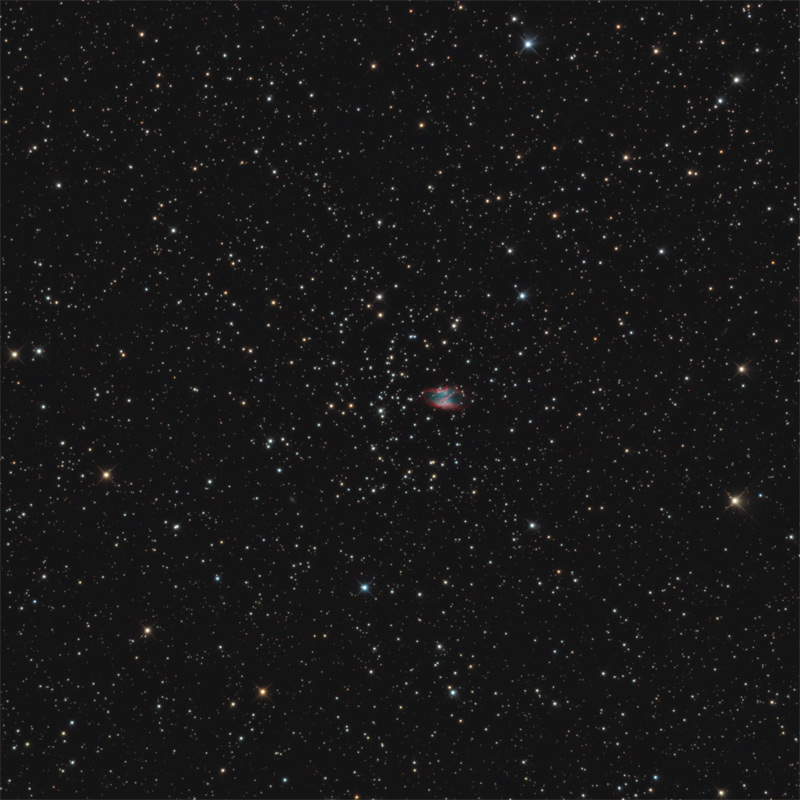Found Images: 2014 November
- geckzilla
- Ocular Digitator
- Posts: 9180
- Joined: Wed Sep 12, 2007 12:42 pm
- Location: Modesto, CA
- Contact:
Re: Found Images: 2014 November
This is a really cool picture but some of the spectra are quite dark and hard to make out. It was made by a biochem student named Raven. You can see her original post here:
http://rainbowkitteh.tumblr.com/post/83 ... -some-time
http://rainbowkitteh.tumblr.com/post/83 ... -some-time
Just call me "geck" because "zilla" is like a last name.
- geckzilla
- Ocular Digitator
- Posts: 9180
- Joined: Wed Sep 12, 2007 12:42 pm
- Location: Modesto, CA
- Contact:
Re: Found Images: 2014 November
Beautiful simulation.
Click to play embedded YouTube video.
Just call me "geck" because "zilla" is like a last name.
-
starsurfer
- Stellar Cartographer
- Posts: 5330
- Joined: Thu Mar 15, 2012 7:25 pm
Re: Found Images: 2014 November
Very nice visually! Shouldn't this be in the video submissions thread?geckzilla wrote:Beautiful simulation.Click to play embedded YouTube video.
-
starsurfer
- Stellar Cartographer
- Posts: 5330
- Joined: Thu Mar 15, 2012 7:25 pm
Re: Found Images: 2014 November
LBN 437
http://www.capella-observatory.com/Imag ... LBN437.htm
Copyright: Stefan Binnewies and Josef Pöpsel
http://www.capella-observatory.com/Imag ... LBN437.htm
Copyright: Stefan Binnewies and Josef Pöpsel
- geckzilla
- Ocular Digitator
- Posts: 9180
- Joined: Wed Sep 12, 2007 12:42 pm
- Location: Modesto, CA
- Contact:
Re: Found Images: 2014 November
I've always put found videos in here too. The way I figure, I didn't make it so I shouldn't put it anywhere but here.starsurfer wrote:Very nice visually! Shouldn't this be in the video submissions thread?
Just call me "geck" because "zilla" is like a last name.
-
starsurfer
- Stellar Cartographer
- Posts: 5330
- Joined: Thu Mar 15, 2012 7:25 pm
Re: Found Images: 2014 November
HDW 2
http://www.pbase.com/dsantiago/image/157725320
Copyright: Derek Santiago This planetary nebula is also catalogued as Sh2-200.
http://www.pbase.com/dsantiago/image/157725320
Copyright: Derek Santiago This planetary nebula is also catalogued as Sh2-200.
-
starsurfer
- Stellar Cartographer
- Posts: 5330
- Joined: Thu Mar 15, 2012 7:25 pm
Re: Found Images: 2014 November
BV 5-3
http://www.capella-observatory.com/Imag ... /BV5-3.htm
Copyright: Stefan Binnewies and Josef Pöpsel This planetary nebula was discovered by the astronomer Erika Böhm-Vitense.
http://www.capella-observatory.com/Imag ... /BV5-3.htm
Copyright: Stefan Binnewies and Josef Pöpsel This planetary nebula was discovered by the astronomer Erika Böhm-Vitense.
-
starsurfer
- Stellar Cartographer
- Posts: 5330
- Joined: Thu Mar 15, 2012 7:25 pm
ESO: Seeing into the Heart of Mira A and its Partner
Seeing into the Heart of Mira A and its Partner
ESO Picture of the Week | ALMA | 2014 Nov 24
The wonderful complexity of the Mira AB system - S. Ramstedt et al
ESO Picture of the Week | ALMA | 2014 Nov 24
Studying red giant stars tells astronomers about the future of the Sun — and about how previous generations of stars spread the elements needed for life across the Universe. One of the most famous red giants in the sky is called Mira A, part of the binary system Mira which lies about 400 light-years from Earth. In this image ALMA reveals Mira’s secret life.
Mira A is an old star, already starting to throw out the products of its life’s work into space for recycling. Mira A’s companion, known as Mira B, orbits it at twice the distance from the Sun to Neptune.
Mira A is known to have a slow wind which gently moulds the surrounding material. ALMA has now confirmed that Mira’s companion is a very different kind of star, with a very different wind. Mira B is a hot, dense white dwarf with a fierce and fast stellar wind.
New observations show how the winds from the two stars have created a fascinating, beautiful and complex nebula. The remarkable heart-shaped bubble at the centre is created by Mira B’s energetic wind inside Mira A’s more relaxed outflow. The heart, which formed some time in the last 400 years or so, and the rest of the gas surrounding the pair show that they have long been building this strange and beautiful environment together. ...
The wonderful complexity of the Mira AB system - S. Ramstedt et al
- Astronomy & Astrophysics 570 L14 (Oct 2014) DOI: 10.1051/0004-6361/201425029
arXiv.org > astro-ph > arXiv:1410.1529 > 06 Oct 2014
Know the quiet place within your heart and touch the rainbow of possibility; be
alive to the gentle breeze of communication, and please stop being such a jerk. — Garrison Keillor
alive to the gentle breeze of communication, and please stop being such a jerk. — Garrison Keillor
ESA/HEIC: A Slashing Smudge across the Sky (UGC 1281)
A Slashing Smudge across the Sky (UGC 1281)
ESA Hubble Picture of the Week | 2014 Nov 24
ESA Hubble Picture of the Week | 2014 Nov 24
The galaxy cutting dramatically across the frame of this NASA/ESA Hubble Space Telescope image is a slightly warped dwarf galaxy known as UGC 1281. Seen here from an edge-on perspective, this galaxy lies roughly 18 million light-years away in the constellation of Triangulum (The Triangle).
The bright companion to the lower left of UGC 1281 is the small galaxy PGC 6700, officially known as 2MASX J01493473+3234464. Other prominent stars belonging to our own galaxy, the Milky Way, and more distant galaxies can be seen scattered throughout the sky.
The side-on view we have of UGC 1281 makes it a perfect candidate for studies into how gas is distributed within galactic halos — the roughly spherical regions of diffuse gas extending outwards from a galaxy’s centre. Astronomers have studied this galaxy to see how its gas vertically extends out from its central plane, and found it to be a quite typical dwarf galaxy. However, it does have a slightly warped shape to its outer edges, and is forming stars at a particularly low rate.
Know the quiet place within your heart and touch the rainbow of possibility; be
alive to the gentle breeze of communication, and please stop being such a jerk. — Garrison Keillor
alive to the gentle breeze of communication, and please stop being such a jerk. — Garrison Keillor
NASA/GSFC: Swift Marks 10 Years of Game-changing Astrophysic
Swift Marks 10 Years of Game-changing Astrophysics
NASA | GSFC | Swift | 2014 Nov 20
http://asterisk.apod.com/viewtopic.php?t=34148
NASA | GSFC | Swift | 2014 Nov 20
Over the past decade, NASA's Swift Gamma-ray Burst Explorer has proven itself to be one of the most versatile astrophysics missions ever flown. It remains the only satellite capable of precisely locating gamma-ray bursts -- the universe's most powerful explosions -- and monitoring them across a broad range of wavelengths using multiple instruments before they fade from view.
"Swift" isn't just a name -- it's a core capability, a part of the spacecraft's DNA. Gamma-ray bursts (GRBs) typically last less than a minute and Swift detects one event about twice a week. Once Swift observes a GRB, it automatically determines the blast's location, broadcasts the position to the astronomical community, and then turns toward the site to investigate with its own sensitive telescopes. ...
To date, Swift has detected more than 900 GRBs. Its discoveries include a new ultra-long class, whose high-energy emissions endure for hours; the farthest GRB, whose light took more than 13 billion years to reach us; and the "naked-eye" GRB, which for about a minute was bright enough to see with the naked-eye despite the fact that its light had traveled 7.5 billion years. Early in the mission, Swift observations provided the "smoking gun" that validated long-standing theoretical models suggesting that GRBs with durations under two seconds come from mergers of two neutron stars, objects with the mass of the sun that have been crushed to the size of a city.
In addition to its studies of GRBs, Swift conducts a wide array of observations of other astrophysical phenomena. A flexible planning system enables astronomers to request Swift "target-of-opportunity" (TOO) observations, which can be commanded from the ground in as little as 10 minutes, or set up monitoring programs to observe specific sources at time intervals ranging from minutes to months. The system can schedule up to 75 independent targets a day. ...
Videos:
http://asterisk.apod.com/viewtopic.php?t=34148
Know the quiet place within your heart and touch the rainbow of possibility; be
alive to the gentle breeze of communication, and please stop being such a jerk. — Garrison Keillor
alive to the gentle breeze of communication, and please stop being such a jerk. — Garrison Keillor
-
starsurfer
- Stellar Cartographer
- Posts: 5330
- Joined: Thu Mar 15, 2012 7:25 pm
Re: Found Images: 2014 November
Sun
http://www.astrodonimaging.com/gallery/ ... ?imgID=257
Copyright: Don Goldman This image was taken on 10 April 2013.
http://www.astrodonimaging.com/gallery/ ... ?imgID=257
Copyright: Don Goldman This image was taken on 10 April 2013.
ARC: Supercomputer Simulation of Magnetic Field Loops on the
Supercomputer Simulation of Magnetic Field Loops on the Sun
NASA | Ames Research Center | Pleiades | 2014 Nov 18
NASA | Ames Research Center | Pleiades | 2014 Nov 18
[c][attachment=0]sc14_iotd_solar[1].png[/attachment][/b][/c]Magnetic fields emerging from below the surface of the sun influence the solar wind—a stream of particles that blows continuously from the sun’s atmosphere through the solar system. Researchers at NASA and its university partners are using high-fidelity computer simulations to learn how these magnetic fields emerge, heat the sun’s outer atmosphere and produce sunspots and flares.
This visualization shows magnetic field loops in a portion of the sun, with colors representing magnetic field strength from weak (blue) to strong (red). The simulation was run on the Pleiades supercomputer at the NASA Advanced Supercomputing facility at NASA's Ames Research Center in Moffett Field, California.
The knowledge gained through simulation results like this one help researchers better understand the sun, its variations, and its interactions with Earth and the solar system.
Know the quiet place within your heart and touch the rainbow of possibility; be
alive to the gentle breeze of communication, and please stop being such a jerk. — Garrison Keillor
alive to the gentle breeze of communication, and please stop being such a jerk. — Garrison Keillor
ESO: A Colourful Gathering of Middle-aged Stars (NGC 3532)
A Colourful Gathering of Middle-aged Stars
ESO Photo Release | 2014 Nov 26
ESO Photo Release | 2014 Nov 26
The MPG/ESO 2.2-metre telescope at ESO’s La Silla Observatory in Chile has captured a richly colourful view of the bright star cluster NGC 3532. Some of the stars still shine with a hot bluish colour, but many of the more massive ones have become red giants and glow with a rich orange hue.[attachment=0]eso1439a[1].jpg[/attachment][/b]
NGC 3532 is a bright open cluster located some 1300 light-years away in the constellation of Carina (The Keel of the ship Argo). It is informally known as the Wishing Well Cluster, as it resembles scattered silver coins which have been dropped into a well. It is also referred to as the Football Cluster, although how appropriate this is depends on which side of the Atlantic you live. It acquired the name because of its oval shape, which citizens of rugby-playing nations might see as resembling a rugby ball.
This very bright star cluster is easily seen with the naked eye from the southern hemisphere. It was discovered by French astronomer Nicolas Louis de Lacaille whilst observing from South Africa in 1752 and was catalogued three years later in 1755. It is one of the most spectacular open star clusters in the whole sky.
NGC 3532 covers an area of the sky that is almost twice the size of the full Moon. It was described as a binary-rich cluster by John Herschel who observed “several elegant double stars” here during his stay in southern Africa in the 1830s. Of additional, much more recent, historical relevance, NGC 3532 was the first target to be observed by the NASA/ESA Hubble Space Telescope, on 20 May 1990. ...
Know the quiet place within your heart and touch the rainbow of possibility; be
alive to the gentle breeze of communication, and please stop being such a jerk. — Garrison Keillor
alive to the gentle breeze of communication, and please stop being such a jerk. — Garrison Keillor
-
starsurfer
- Stellar Cartographer
- Posts: 5330
- Joined: Thu Mar 15, 2012 7:25 pm
-
starsurfer
- Stellar Cartographer
- Posts: 5330
- Joined: Thu Mar 15, 2012 7:25 pm
Re: Found Images: 2014 November
Re: Found Images: 2014 November
Credits: ESA/Rosetta/NAVCAM – CC BY-SA IGO 3.0
-
starsurfer
- Stellar Cartographer
- Posts: 5330
- Joined: Thu Mar 15, 2012 7:25 pm
Re: Found Images: 2014 November
That is such a lovely image. On the shore of the Milky Way, among uncountable grains of yellow sand, are sprinkled a handful of little blue sapphires - and a few yellow topazes.starsurfer wrote:Wild Duck Cluster (M11)
http://www.chart32.de/index.php/component/k2/item/130
Copyright: CHART32
Ann
Color Commentator
-
starsurfer
- Stellar Cartographer
- Posts: 5330
- Joined: Thu Mar 15, 2012 7:25 pm
Re: Found Images: 2014 November
That is a beautiful and poetic statement and I'd expect no less from you. Star clusters are simply wonderful and don't get the attention they deserve.Ann wrote:That is such a lovely image. On the shore of the Milky Way, among uncountable grains of yellow sand, are sprinkled a handful of little blue sapphires - and a few yellow topazes.starsurfer wrote:Wild Duck Cluster (M11)
http://www.chart32.de/index.php/component/k2/item/130
Copyright: CHART32
Ann







